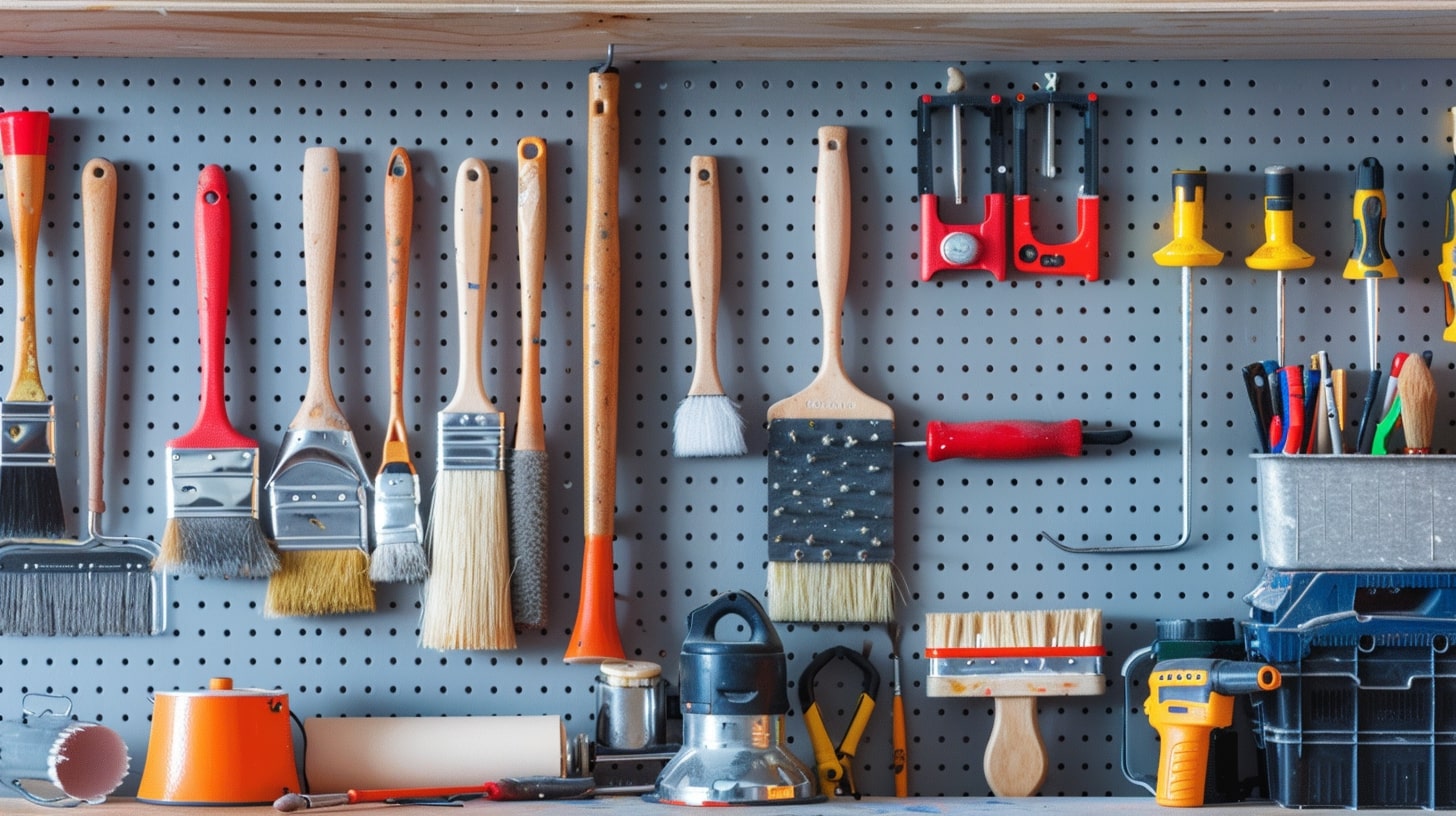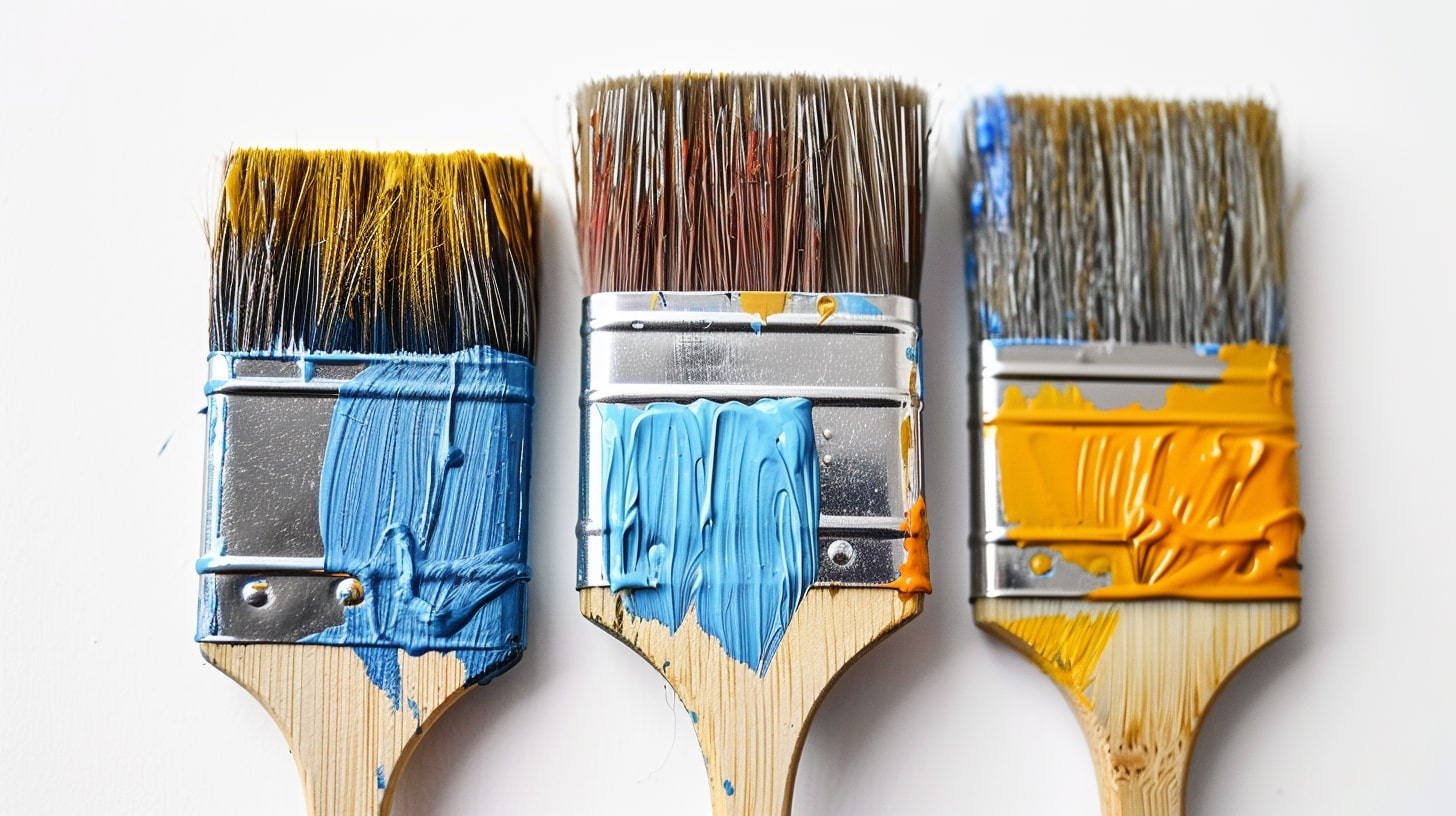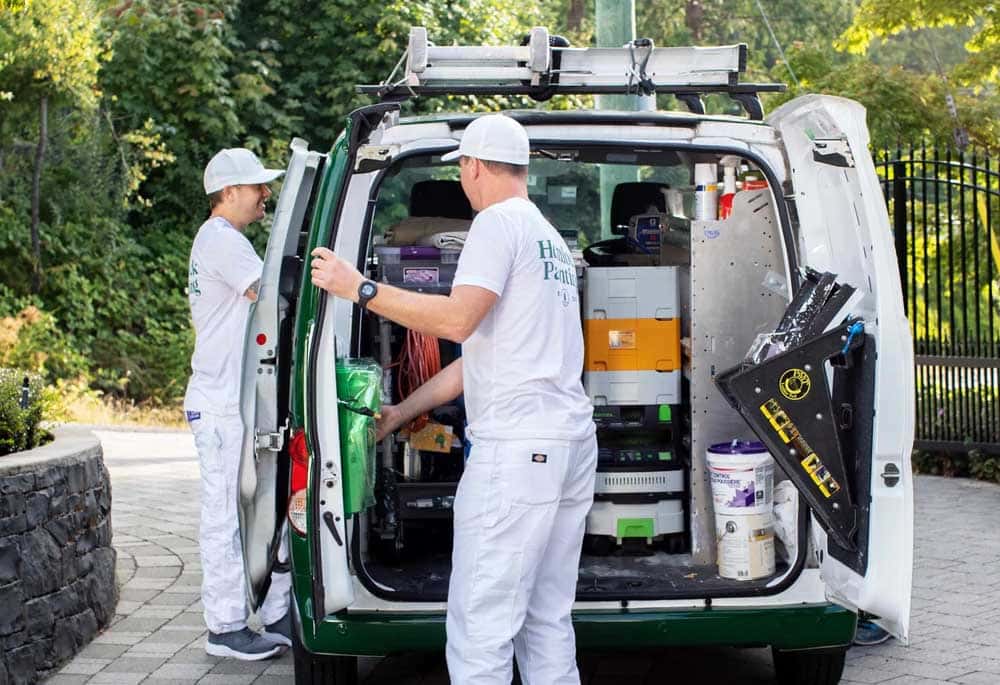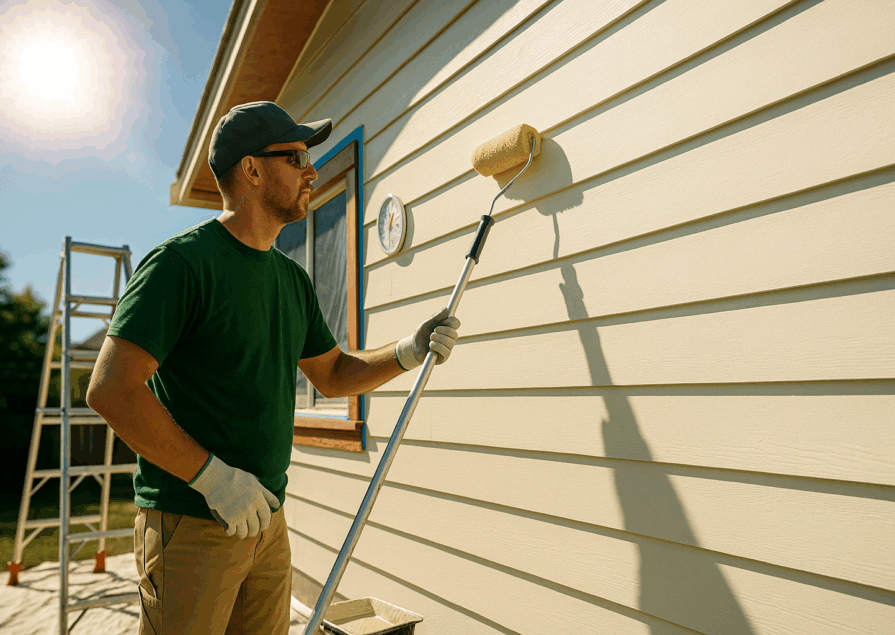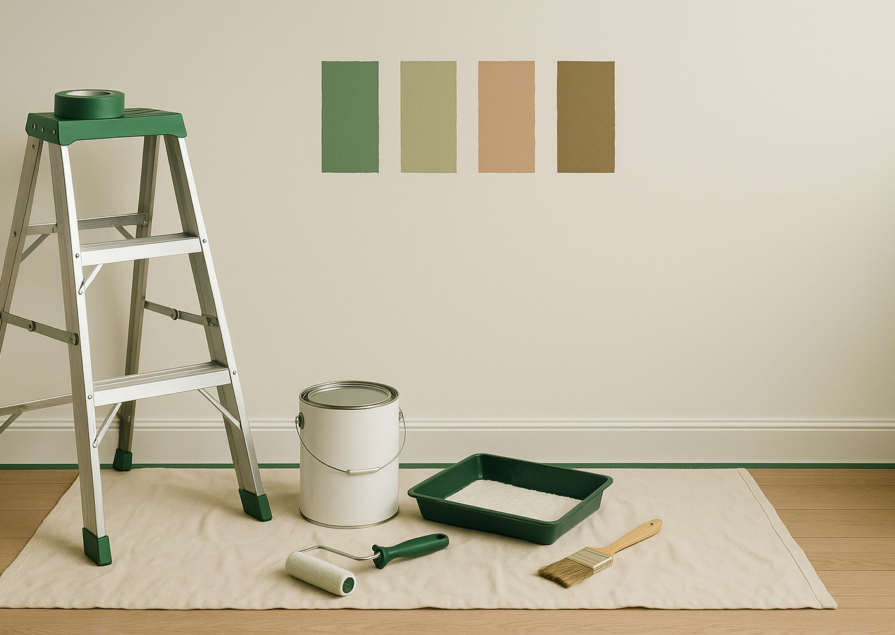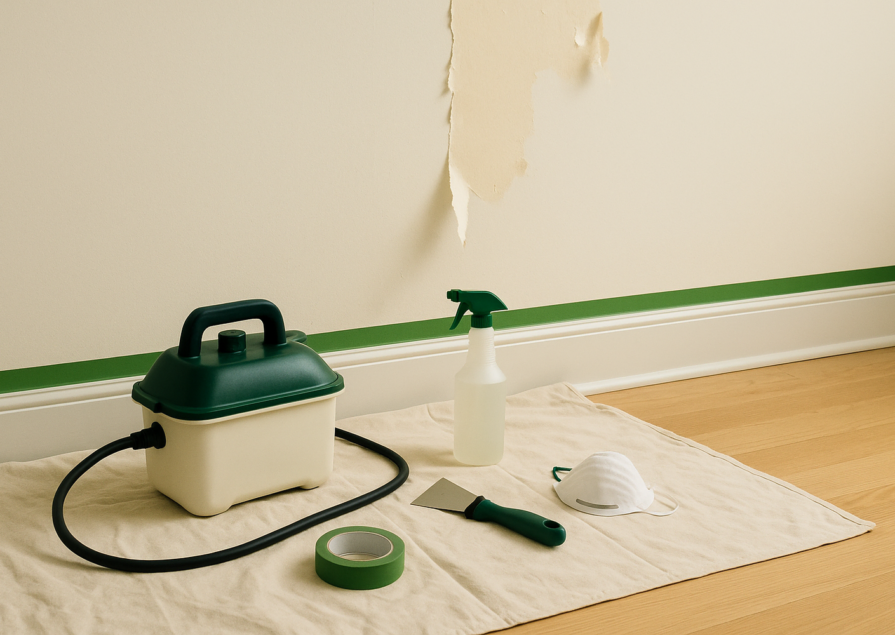Maintaining your painting equipment is crucial for ensuring that your tools last a long time and perform well. Whether you’re a professional painter or a DIY enthusiast, keeping your brushes, rollers, and other painting tools in top condition can save you time and money. Proper maintenance not only extends the lifespan of your equipment but also ensures that your paint jobs are of high quality every time. In this article, we’ll dive into the essential steps and tips for maintaining your painting equipment, so you can achieve the best results on every project.
Essential Painting Equipment
Maintaining painting equipment involves taking care of various tools, each with its own cleaning and maintenance needs. Let’s look at the essential painting equipment and how to keep each piece in prime condition.
Brushes
Types of Brushes:
- Flat Brushes
- Angled Brushes
- Detail Brushes
Cleaning Brushes: Cleaning your brushes right after use is crucial. For water-based paints, rinse the brushes under warm water until the water runs clear. For oil-based paints, use a solvent like mineral spirits. Gently comb through the bristles with a brush comb to remove any remaining paint.
Proper Drying Techniques: After cleaning, shake off the excess water or solvent and reshape the bristles with your fingers. Hang the brushes by their handles or lay them flat to dry. This prevents the bristles from becoming misshapen.
Storage Tips: Store brushes in a dry, cool place, ideally hanging them to maintain their shape. Avoid storing them with the bristles facing down as this can cause damage.
Rollers
Removing Excess Paint: Use a roller scraper or a putty knife to scrape off excess paint from the roller. This makes the cleaning process easier and more effective.
Washing Rollers: For water-based paints, rinse the roller under warm water, using your hands to work out the paint. For oil-based paints, use a suitable solvent. Continue rinsing until the roller is clean.
Proper Drying and Storage: Squeeze out excess water or solvent and let the roller air dry. Store rollers upright or hanging to maintain their shape.
Using Liners: Using disposable liners in your paint trays can significantly cut down on cleaning time. Simply remove and discard the liner after use.
Spray Guns
Disassembling the Spray Gun: Always refer to the manufacturer’s instructions when disassembling your spray gun. This ensures you do it correctly and avoid damaging any parts.
Cleaning Each Component: Clean each part of the spray gun thoroughly. Use the recommended cleaning solution and brushes to remove all paint residues. Pay special attention to the nozzle and needle.
Reassembling and Storing: After cleaning, ensure all parts are completely dry before reassembling the spray gun. Store the spray gun in a clean, dry place.
Paint Trays and Buckets
Preventing Paint from Drying Out: Use paint tray liners or cover the trays and buckets with plastic wrap between uses. This prevents the paint from drying out and makes cleaning easier.
Proper Cleaning Techniques: Rinse trays and buckets with warm water for water-based paints or use a solvent for oil-based paints. Scrub with a brush if necessary to remove all residues.
Storage Tips: Store your trays and buckets in a dry place. Stacking them can save space, but ensure they are completely dry to avoid any mould or mildew.
By following these guidelines, you can keep your painting equipment in excellent condition, ready for your next project.
General Cleaning Guidelines
Immediate Cleaning After Use:
Cleaning your painting tools immediately after use is the best way to ensure they remain in good condition. Allowing paint to dry on your brushes or rollers can make them much harder to clean and may even render them unusable.
Using the Right Cleaning Solutions:
Different types of paint require different cleaning solutions. Water-based paints can usually be cleaned with warm water and mild soap, while oil-based paints often require stronger solvents like mineral spirits or paint thinners. Always read the paint manufacturer’s recommendations for the best cleaning methods.
Avoiding Common Mistakes:
One of the most common mistakes people make is not cleaning their tools thoroughly. Even a small amount of leftover paint can harden and ruin a brush or roller. Another common mistake is using the wrong type of solvent, which can damage the bristles of a brush or the fabric of a roller.
Cleaning Brushes
Step-by-Step Brush Cleaning Process:
- Rinse: Immediately after painting, rinse the brush under warm water (for water-based paints) or in a container of solvent (for oil-based paints).
- Comb: Use a brush comb or an old fork to comb through the bristles and remove any trapped paint.
- Wash: Wash the brush with warm water and mild soap, working the soap into the bristles with your fingers.
- Rinse Again: Rinse thoroughly under warm water to remove all soap.
- Dry: Shake off excess water, reshape the bristles, and let the brush air dry flat or hanging.
Fun Fact: Did you know that the earliest paintbrushes were made from animal hair? Ancient Egyptians used brushes made from split palm leaves and reeds.
Proper Drying Techniques:
Proper drying is essential to maintain the shape and usability of your painting tools. After washing, shake off as much water as possible from brushes and rollers. Lay brushes flat to dry, or hang them by the handles to prevent the bristles from becoming misshapen. For rollers, stand them on end or hang them to dry.
Storage Tips for Brushes:
Store your brushes in a dry, cool place. Hanging them by the handles is the best way to maintain their shape. Avoid storing brushes with the bristles facing down, as this can cause the bristles to bend and become damaged.
By following these general cleaning guidelines, you can keep your painting tools in great condition, ensuring they are ready for your next project and can provide you with the best results possible.
Key Takeaway: Clean your painting tools immediately after use and store them properly to extend their lifespan and maintain their performance.
Best Cleaning Products for Painting Equipment
Using the right cleaning products can make maintaining your painting equipment much easier and more effective. Here are some recommended products for different types of tools:
Recommended Cleaners for Brushes
Water-Based Paints:
- Warm Water and Mild Soap: Simple and effective for water-based paints. Look for a soap that is gentle on bristles.
- Specialty Brush Cleaners: Products like the Master’s Brush Cleaner are designed to remove paint and condition the bristles.
Oil-Based Paints:
- Mineral Spirits: Effective for breaking down oil-based paints. Ensure you use a well-ventilated area.
- Turpentine: Another strong solvent, though it can have a stronger odour than mineral spirits.
Best Solvents for Rollers
Water-Based Paints:
- Warm Water: Combined with mild soap, it’s usually sufficient for most water-based paints.
- Ammonia Solution: For tougher water-based paint residues, an ammonia solution can help.
Oil-Based Paints:
- Mineral Spirits: These work well for cleaning oil-based paints from rollers.
- Paint Thinners: Effective but should be used with caution due to their strong fumes.
Fun Fact: Some professional painters swear by using a mixture of fabric softener and water to clean rollers, as it helps break down the paint and leaves the rollers soft.
Effective Cleaners for Spray Guns
General Cleaners:
- Automotive Spray Gun Cleaners: These are specifically formulated to clean paint from spray guns without damaging the parts.
- Acetone: Effective but should be used sparingly to avoid damaging plastic parts.
Specialized Products:
- Spray Gun Cleaning Kits: These kits often come with brushes, needles, and cleaning solutions designed to thoroughly clean every part of the spray gun.
- Biodegradable Cleaners: Products like EcoSolve are environmentally friendly and effective for cleaning spray guns.
Preventative Maintenance Tips
Regular maintenance goes beyond just cleaning. Here are some preventative maintenance tips to keep your painting equipment in top shape:
Regular Inspections
- Before Each Use: Check brushes, rollers, and spray guns for any signs of damage or wear.
- After Each Use: Inspect tools after cleaning to ensure all paint residue has been removed.
Pro Tip: Keep a checklist of maintenance tasks for each piece of equipment to ensure nothing is overlooked.
Proper Storage Practices
- Temperature Control: Store your equipment in a dry, cool place to prevent damage from heat or moisture.
- Protective Cases: Use protective cases or covers for your brushes and spray guns to keep them clean and safe.
- Organized Storage: Keep your tools organized and easily accessible to avoid damage from being jumbled together.
Scheduling Deep Cleanings
- Routine Cleanings: Schedule regular deep cleanings for your tools, even if they haven’t been used heavily. This prevents any buildup from becoming unmanageable.
- Seasonal Maintenance: At the start and end of the painting season, give all your equipment a thorough cleaning and inspection.
Troubleshooting Common Issues
Even with the best care, problems can arise. Here’s how to troubleshoot some common issues with painting equipment:
Dealing with Hardened Paint on Brushes
- Soaking in Solvent: For oil-based paints, soak the brush in mineral spirits or turpentine to soften the hardened paint.
- Using a Brush Comb: After soaking, use a brush comb to work out the softened paint.
- Hot Water for Water-Based Paints: Soak the brush in hot water and use a mild detergent to break down the hardened paint.
Pro Tip: Never use boiling water, as it can damage the bristles and loosen the glue holding them.
Removing Stubborn Paint from Rollers
- Soaking in Fabric Softener Solution: For water-based paints, soak the roller in a mixture of fabric softener and warm water.
- Using a Roller Scraper: After soaking, use a roller scraper to remove any remaining paint.
- Solvent Soak for Oil-Based Paints: Soak the roller in mineral spirits or paint thinner, then rinse thoroughly.
Fixing Clogged Spray Guns
- Disassembling the Spray Gun: Follow the manufacturer’s instructions to disassemble the spray gun.
- Cleaning Each Part Thoroughly: Use a spray gun cleaning kit to clean each part, paying special attention to the nozzle and needle.
- Reassembling and Testing: After cleaning, reassemble the spray gun and test it with water or a cleaning solution to ensure it’s working properly.
By addressing these aspects, you can keep your painting equipment in excellent condition, ensuring that it performs well and lasts for many projects to come. Proper maintenance is not just about cleaning but also about regular inspections, using the right products, and troubleshooting common issues.
Professional Maintenance Services
Sometimes, despite our best efforts, professional maintenance services may be required to ensure our painting equipment is in optimal condition. Here’s when to consider professional help, how to find reliable service providers, and the cost vs. benefits analysis.
When to Consider Professional Cleaning
- Extensive Buildup: If there’s extensive paint buildup that you can’t remove with regular cleaning methods, it might be time to consult a professional.
- Equipment Malfunction: When your spray gun, brushes, or rollers aren’t performing as they should despite thorough cleaning, professional maintenance can help.
- Time Constraints: If you’re on a tight schedule, professional services can save you significant time, allowing you to focus on your projects.
Pro Tip: Regular professional maintenance can act as a preventive measure, catching and addressing issues before they become major problems.
Finding Reliable Service Providers
- Research: Look for service providers with good reviews and a solid reputation in the industry.
- Ask for Recommendations: Get recommendations from fellow painters or industry forums.
- Check Certifications: Ensure the service provider is certified and follows industry standards for cleaning and maintenance.
Cost vs. Benefits of Professional Services
- Cost Analysis: Compare the cost of professional maintenance with the potential cost of replacing damaged equipment.
- Quality Assurance: Professional cleaning often results in better performance and longer lifespan of equipment.
- Time Savings: Professionals can clean and maintain equipment more efficiently, saving you valuable time.
Conclusion
Maintaining your painting equipment is not just about keeping your tools clean; it’s about ensuring their longevity and performance. By following the outlined steps for cleaning brushes, rollers, spray guns, and paint trays, and using the recommended cleaning products, you can achieve professional-level maintenance at home. Regular inspections and proper storage further enhance the lifespan of your tools. When in doubt, don’t hesitate to seek professional maintenance services. Proper care of your equipment ultimately saves you time, money, and ensures high-quality results in all your painting projects.
Key Takeaway: Consistent maintenance and proper cleaning routines are crucial for preserving the quality and extending the life of your painting equipment.
FAQs
- How often should I clean my painting equipment?
- It’s best to clean your painting tools immediately after each use to prevent paint from drying and causing damage.
- What is the best way to store brushes and rollers?
- Store brushes hanging by their handles or laying flat. Rollers should be hung or stood on end to maintain their shape.
- Can I use household cleaners on my painting tools?
- For water-based paints, mild household soap is fine. For oil-based paints, use appropriate solvents like mineral spirits.
- How do I know if a cleaner is safe for my equipment?
- Always check the manufacturer’s recommendations and use cleaners specifically designed for the type of paint and tool.
- What should I do if my spray gun is still clogged after cleaning?
- If regular cleaning doesn’t resolve the issue, consider seeking professional maintenance to avoid damaging the spray gun.
